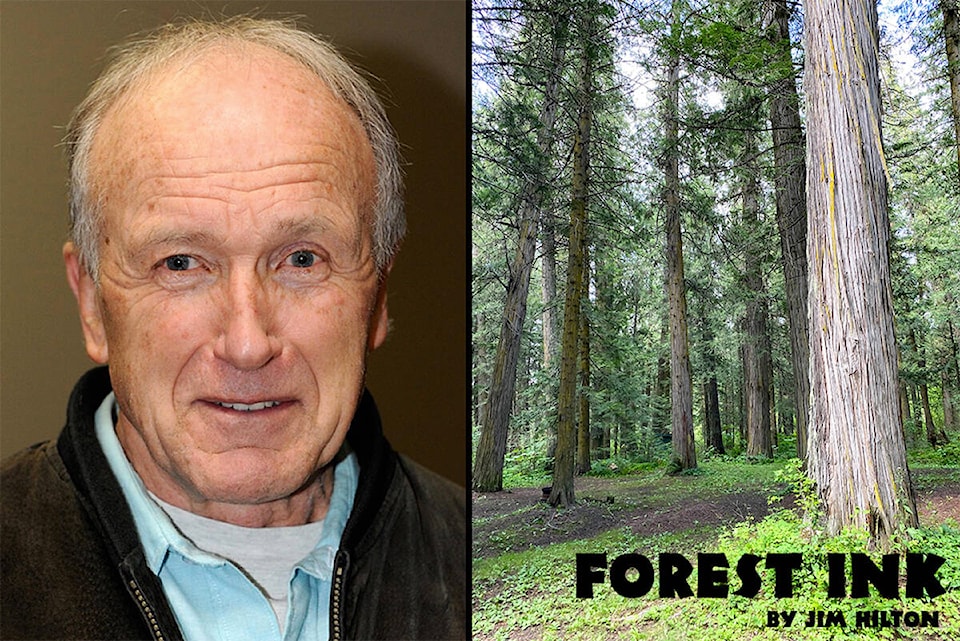As I was harvesting some carrots this fall it soon became apparent much larger carrots would have resulted if I had taken more time to thin them properly. Even though a group of five carrots had produced a relatively large leaf mass, only one of the five tightly packed plants had produced a modest-sized product.
As I was driving past an old fire on Highway 20 that had taken place on a pine stand I was thinking of the same principle that was happening to the densely-packed trees as had taken place in my carrot patch. As amazing as lodgepole pine is, they are growing on some of the most drought-prone sites in the province and getting the right number of trees on a site has always been a challenge from a forestry perspective. The survival strategy for pine trees is to get as many seeds dispersed as quickly as possible following a fire which is accomplished by the fire helping release seeds from a serotinous cone. The more trees, the better, which will increase the success of the stand because it will be subjected to a number of pests and other natural disasters. From a forestry perspective, it took a few decades for the commercial value of the interior pine stands to be appreciated.
It then took another few decades for ways to modify the existing stands and ensure new stands following logging had the proper density to get the largest trees per hectare for future timber values.
The following information can be found in a variety of provincial government publications on tree spacing. On existing stands research trials were established to test what densities produced the maximum volume on fewer trees which helped reduce milling costs and produced more uniform dimensions.
A common trial on a ten-year-old forest consisted of five spacing levels of 500, 1,000, 1,500, 2,000, and 2,500 trees per hectare, plus unspaced controls, which were analyzed after 20 years of growth. As expected, spacing had a significant effect on all of the individual-tree characteristics examined, but its effect on per-hectare values was mixed. Site indices had a lot to do with the final outcomes of the spaced stands, and it was a guessing game as to how many extra trees should be left to take into account future tree losses to a number of factors. On older stands a general rule is the average distance can be expressed as the average number of stems per hectare (sph) left after spacing. For example, a spacing of four metres, measured as a triangle, between trees will leave approximately 725 trees on each hectare.
In B.C. , most juvenile spacing is done almost exclusively by power saw with detailed instructions as to the procedures.
Anyone contemplating taking out a contract on spacing should know the rules, which can be found in Juvenile Spacing Quality Inspection, March 30, 2001, as well as in the Stand Management Prescription (SMP) and in the contract. The intent of the juvenile spacing quality inspection procedures is to determine how closely the work completed corresponds to the standards stated in the SMP and in the contract. If the quality of work completed is below 92.6%, then payment is reduced based on a graduated payment system. It is probably a good idea to work as a crew member with an experienced crew chief before taking on a contract of your own. The juvenile spacing quality inspection procedures involve the establishment of sample plots within the work area. The plot data are then used in mathematical calculations to determine the final payment.
Jim Hilton is a retired professional forester who lives in the Cariboo Chilcotin where he worked for many years.
newsroom@100milefreepress.net
Like us on Facebook and follow us on Twitter.
